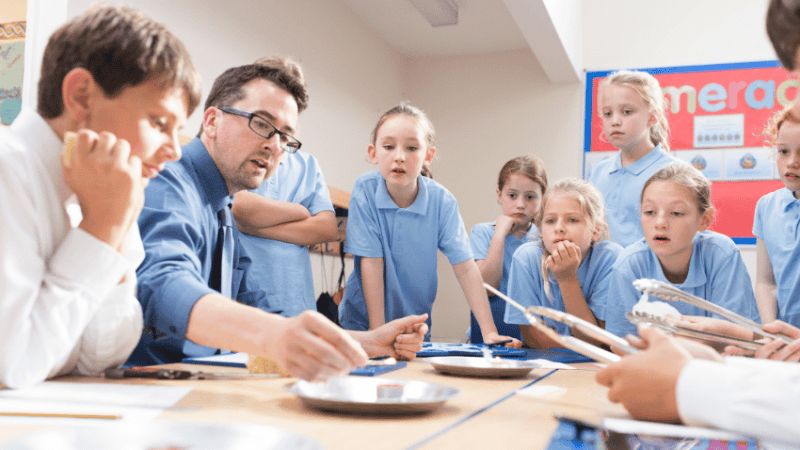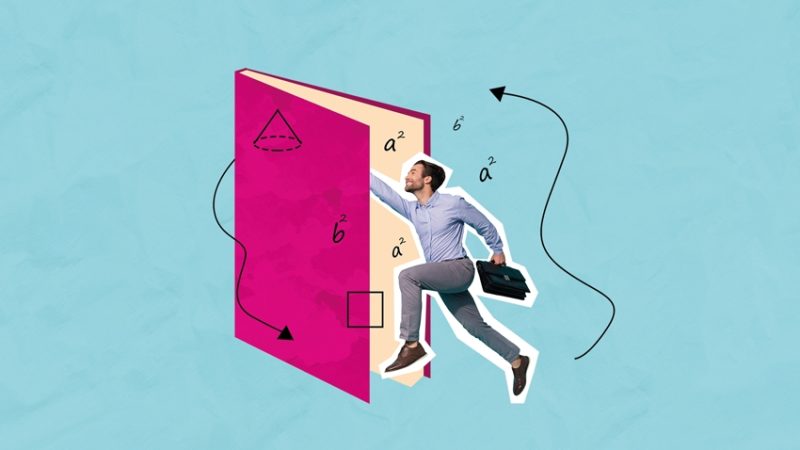6 Of The Best Physics Resources To Unearth The Next Brian Cox In Your KS3 Science Class
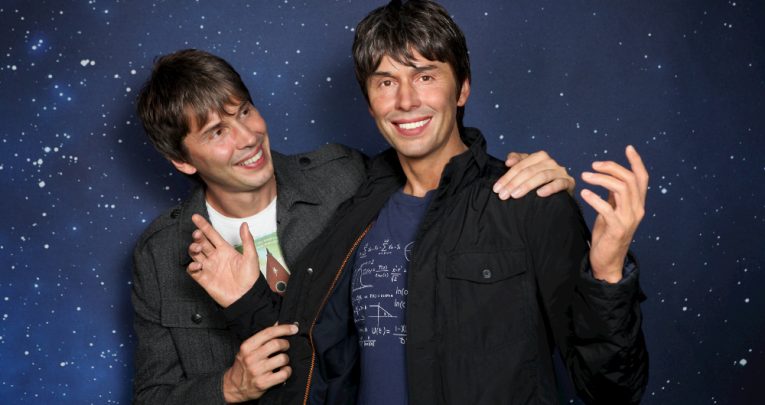
In the words of Olivia Newton-John, let's get physical…
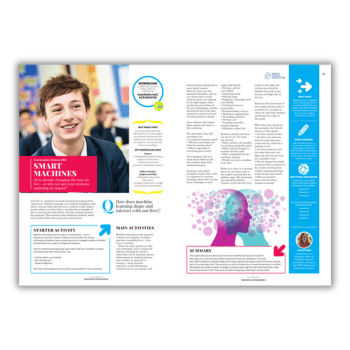
Science is cool! Yes. This might not be news to you, but there’s been a real shift in the internet age as to how this once oft-mocked subject is perceived among today’s youngsters.
Of course, you will still see the nerdy lab-coat-wearing stereotype on certain TV shows, but in celebrity science enthusiasts like Dara O’Briain and bonafide physicists like Brian Cox the Professor Frinks of this world now have a super-cool counterpoint.
And if anyone in your class still needs convincing that science is cool, here are some great lessons, activities and experiments that should help.
1 | A lesson from Brian Cox
Talking of everyone’s favourite celebrity physicist, Madame Tussaud’s Blackpool has recently unveiled not just a waxwork figure, but a national curriculum-based science lesson taught by a 3D hologram of Professor Brian Cox.
Children can join the 3D hologram for an enlightening experience as he talks about space and the solar system, with short interactive lessons about orbiting planets, moons, black holes and Earth itself (all depicted in hologram form too).
Find out more about this interactive KS2/3 lesson here.
2 | Developments in astronomy
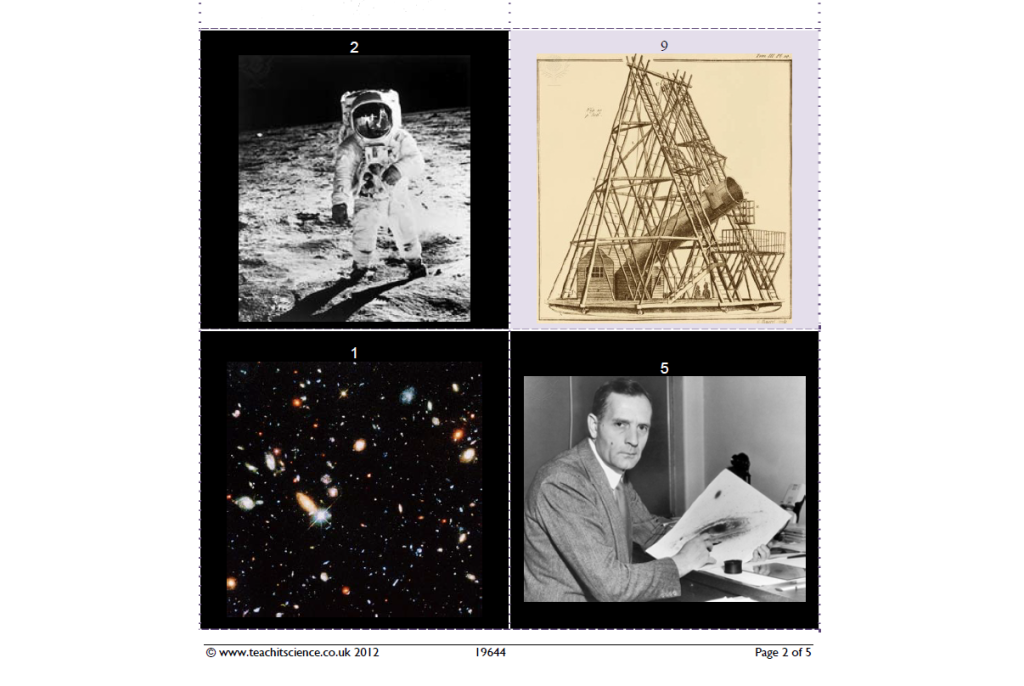
This activity is designed as the main part of a lesson and involves group work, where students order developments in astronomy on a time line.
It gives a great illustration of how technological developments advance our knowledge and understanding of the universe.
Get the PDF, which includes printable image cards to put in order, here.
3 | Life on Mars
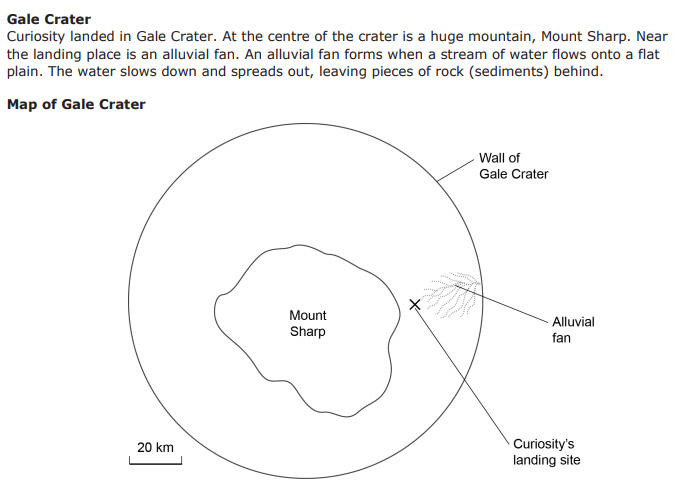
Mission to Mars: It’s 2050 and your students are working in the space industry. How will developments in technology and energy production help them build a planetary station?
This is just one of three printable resources from OUP on the our next door neighbour in the solar system. The other two are Mars Rocks, a lesson on the chemical and physical processes causing geological activity, and the Mars Curiosity landing, and Life on Mars, where students examine the red planet’s environment and compare it to our own.
You’ll find these three free resources here.
4 | What’s that sound?
Made by Teachers TV as part of its Lesson Starters series, these videos understandably don’t have the production value of a Richard Attenborough BBC doc, but they do have education value.
Each one looks at different properties of sound such as showing the vibrations of objects producing a sound, how sound waves can affect the air around lit candles and resonate on materials like glass and what happens when left and right ears’ hearing is mixed up.
The complete set of videos can be found here.
5 | Wave machine
In this video, produced by the National STEM Learning Centre and the Institute of Physics, Alom Shaha describes a how to make a simple but effective wave machine using adhesive tape, jelly babies and wooden skewers.
You can use it to illustrate transverse wave motion in a visual and engaging manner, and there are even some teacher’s notes that tell you how.
All of which can be found here.
6 | Inertia beads
Inertia, force, and motion come together as Sir Isaac Newton’s favorite beads pull themselves out of a container. It’s like the excitement of 100 slinkies without the need to find some stairs. You do need to find some beads though.
Otherwise all it takes is a slight tug and the string of beads pulls itself out of the container and onto the floor. Most surprising, the beads totally empty from the container in a few seconds.
This fantastic introduction to physics, with elements of inertia, friction, potential and kinetic energy, gravity, and acceleration.
Check out the full experiment, as well as ideas for taking it further, here.








